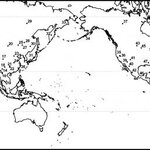Anthropology

Neanderthals/neandertals, popularly regarded as the 'stupid' cousins of modern humans, were actually capable of capturing the most impressive animals - and that takes some sense. Dutch researcher Gerrit Dusseldorp analyzed their daily forays for food to gain insights into the complex behavior of the Neanderthal. His analysis revealed that the hunting was very knowledge intensive.
Although it is now clear that Neanderthals were hunters and not scavengers, their exact hunting methods are still something of a mystery. Dusseldorp investigated just how sophisticated the Neanderthals'…

Did Language Invent Humans ?
Writing is a human invention. We have plenty of evidence of its invention and of its improvement down the ages. It would make no sense to assume that writing somehow 'just appeared'. A magical origin of writing would presuppose that our brains are hard wired to read, but we all know that reading and writing are skills that must be taught in a formal manner. Again, if we were 'hard wired' for written language then we would all use a single writing method, regardless of language. Writing is most definitely invented.
Spoken language is…

The success of religion may be the fault of non-believers (or, if you look at it the other way around, thank god for the atheists!)
At least that is one interpretation of a recent individual-based simulation study of social evolution conducted by James Dow at Oakland University in Rochester, Michigan, and published in a recent issue of the Journal of Artificial Societies and Social Simulation (vol. 11, no. 2 2).
Dow built a simulation program (appropriately called evogod) that explored the question of how religion — i.e., a system based on passing along false or unverifiable…

Aggressive, vengeful behavior of individuals in some South American groups has been considered the means for men to obtain more wives and more children, but an international team of anthropologists working in Ecuador among the Waorani show that sometimes the macho guy does not do better.
The Waorani are rainforest manioc horticulturalists and foragers. When the first peaceful contact occurred in 1958, they numbered about 500 people living in an area the size of New Jersey between the Napo and Curaray rivers in the Amazon basin east of the Andes. Their abundant resources often attracted…

The 66th Four Stone Hearth, a fortnightly collection of anthropology blogging is being hosted over at Aardvarcheology. including a monster of a study on African population genetics.
Excerpt:
The scientists’ first step was to collect DNA from a diverse set ofAfricans. Africa is the most culturally and linguistically diverseplace on Earth, so it was important to take a wide sample ofindividuals from all corners of the continent. In total, they collected2,432 DNA samples from 113 diverse and distinct groups of people fromacross the African continent as well as 60 non-African groups.…

Continuing along on my previous theme (having cleared my soul of the rant on etic viewpoints of cyberculture), many studies I've seen fail to convince the "internet native" because of a number of flaws that could easily be addressed. For brevity, I'm listing them as bullet points with short discussion.
* Determine size, number of posters, average number of posts or interactions per day. It's easier to think of these spaces as functioning somewhat like a large mall -- if you want to study one, you need to get a grasp on how many people usually show up and which areas or shops they…

A detailed analysis of the feet of Homo floresiensis, the miniature hominins who lived on a remote island in eastern Indonesia until 18,000 years ago, may help settle a question hotly debated among paleontologists: how similar was this population to modern humans? A new research paper in Nature may help answer this question.
While the so-called "hobbits" walked on two legs, they say, several features of their feet were so primitive that their gait was not efficient.
The "hobbits," excavated from Liang Bua Cave on the island of Flores, were first described in 2004. Known specimens range…

African, American, and European researchers working in collaboration over a 10-year period have released the largest-ever study of African genetic data—more than four million genotypes—providing a library of new information on the continent which is thought to be the source of the oldest settlements of modern humans.
The study demonstrates startling diversity on the continent, shared ancestry among geographically diverse groups and traces the origins of Africans and African Americans. It is published in the April 30 issue of the journal Science Express.
Researchers studied 121 African…

Did ancestors of Native Americans migrate to the New World in one wave or successive waves, from one ancestral Asian population or a number of different populations? The topic has been debated for decades but after comparing DNA samples from people in dozens of modern-day Native American and Eurasian groups, an international team of scientists thinks it can put the matter to rest: Virtually without exception the new evidence supports the single ancestral population theory, according to the study published in the May issue of the journal Molecular Biology and Evolution.
The team's…

In a previous article, I discussed the controversies associated with anthropological research and debunked myths regarding the true intentions of molecular anthropologists. Furthermore, I also provided examples of Native American communities willing to work with researchers in order to reconstruct their ancestral heritage. Native Americans, for the most part, are rational and scientists, for the most part, are respectful.
But what happens when research and religious interests collide and erupt in legal dispute? Do left-leaning academics cave in to creationists of the…